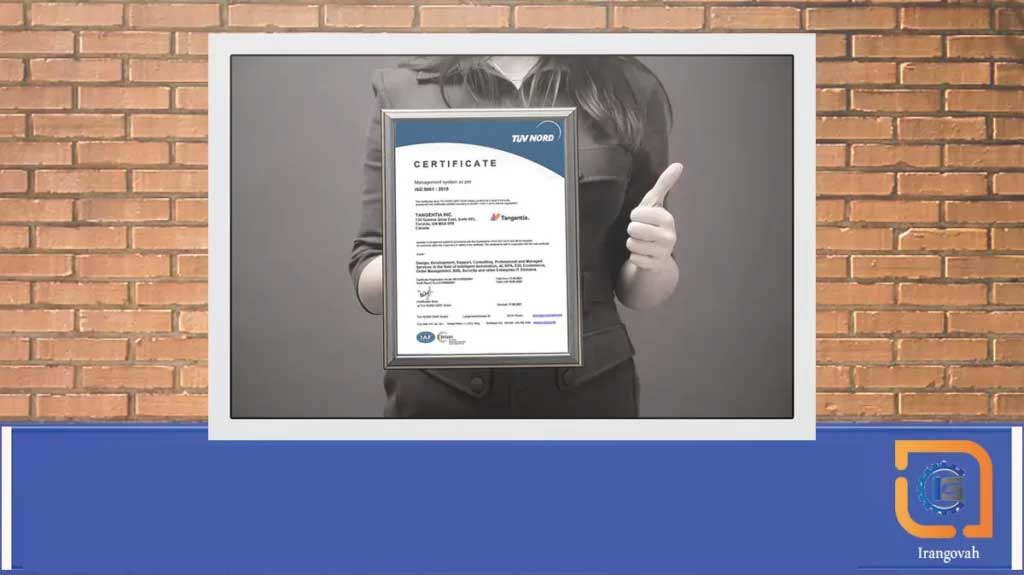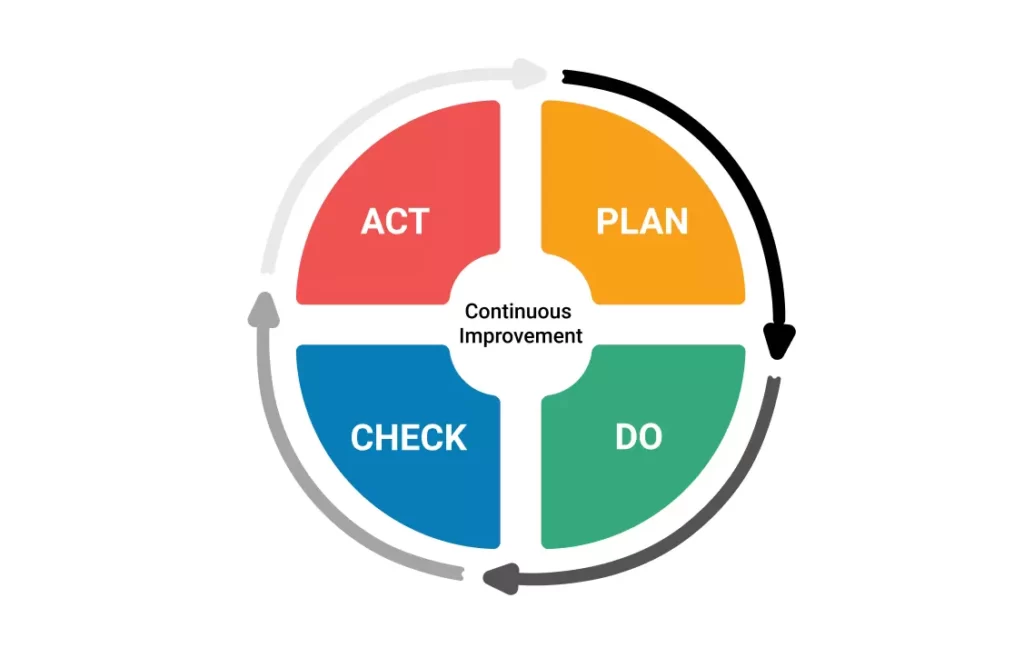Standardization is achieved by establishing generally accepted guidelines related to the creation or support of a product or service, as well as the management of a business or certain required processes. The goal of standardization is to apply a level of consistency or uniformity to specific actions or operations within a chosen environment.

Framework of Standardization
Standardization is a framework of agreements that all relevant parties in an industry or organization must adhere to. This ensures that all processes related to the creation of a good or the performance of a service are conducted within set guidelines.
Ensuring Quality and Comparability
Standardization ensures that the final product has consistent quality and that any conclusions drawn are comparable with other similar items in the same class.
Key Points
- Standardization ensures that certain goods or performances are produced in the same manner through predetermined guidelines.
- Standardized spaces are used in stock, commodity, and futures transactions to enable liquidity, greater efficiency, and cost reduction.
- Standardization is used in accounting methods and for establishing quality standards in production.
How Standardization Works
Standardization comes about by setting up generally accepted guidelines regarding the creation or support of a product or service, and the management of a business or certain processes. It aims to establish a level of consistency or uniformity in specific actions or operations in the chosen environment.
Examples of Standardization
- Generally Accepted Accounting Principles (GAAP): Used by publicly traded companies in the United States, set by the Financial Accounting Standards Board (FASB) to ensure that all financial statements are processed under the same procedures for consistent, reliable, and comparable information disclosure.
- Franchises: Fast-food franchises have precise processes to ensure that, for instance, a hamburger is prepared the same way, regardless of which company in the franchise is visited.
- Product Standards: Manufacturing businesses may follow agency standards to ensure that all products in a category are made with identical specifications across different companies.
- Branding: International product marketing might be standardized to maintain a uniform image across different markets. For example, Coca-Cola maintains a relatively unchanged product appearance across various markets, even when different languages are presented on the products.
Standardization in Markets
- Stock Orders: In stock markets, a standard minimum order of 100 shares can be transacted through exchanges without higher commissions. This standardization by exchanges like the New York Stock Exchange (NYSE) facilitates greater market stability and liquidity.
- Futures and Options: In options markets, a standard contract represents 100 shares of that stock. Futures markets have specific parameters for contract size and delivery dates, varying by contract type.
Top 10 Standardization Organizations Worldwide
There are thousands of standardization organizations globally, often cooperating to avoid duplicating efforts and to endorse each other’s standards. While these organizations may complete each other, their impact is particularly notable in the electronics industry. Here are 10 such organizations, listed without any particular order, some of which may be less familiar.
This translation and restructuring enhance readability and understanding, providing a clear and concise presentation of the concept and applications of standardization.
ISO Organization
The International Organization for Standardization (ISO) was established in 1947 and is headquartered in Geneva, Switzerland. ISO operates in three official languages: English, French, and Russian. Its members comprise national standard organizations from each of the 163 countries. Each member represents their country’s standardization activities to ISO and vice versa. NACI is the representative for the Islamic Republic of Iran.
IEC Organization
The International Electrotechnical Commission (IEC) publishes standards for electrical and electronic technologies. Founded in 1906, its headquarters are also in Geneva, Switzerland. Members of the commission are called National Committees, and each country can have only one such committee. There are 82 members, with ANSI representing the United States.
IEC standards and related conformity assessment systems are used by numerous electronic and electrical products worldwide, ensuring their proper functioning, interoperability, and safe operation.
ITU Organization
The International Telecommunication Union (ITU) is a specialized agency of the United Nations. Originally named the International Telegraph Union, it was founded in 1865 in Paris. ITU serves in the field of information and communication technologies and is now based in Geneva. It has 193 country members and over 700 private sector entities and academic institutions, operating in the six official languages of the United Nations: Arabic, Chinese, English, French, Russian, and Spanish.
An example of an ITU standard that has made its way into semiconductor intellectual property (IP) is the H.264 standard. This advanced video coding is for general audiovisual services. The semiconductor IP, implementing the standard’s baseline and main profile decoder, is available for purchase. This standard was produced in collaboration with ITU and ISO, with ISO referring to it as “MPEG-4 part 10, Advanced Video Coding.”
JEDEC Organization
The Joint Electron Device Engineering Council (JEDEC) is a semiconductor engineering trade organization that also develops standards for the microelectronics industry. It was formed around the same time as the invention of the IC in 1958 by the Electronic Industries Association (EIA). EIA had previously assisted in establishing the Joint Electron Tube Engineering Council, responsible for allocating and coordinating electronic tube type numbers. As solid-state electronics evolved, it became necessary for the council to also address semiconductors.
ANSI Organization
The American National Standards Institute (ANSI) was established in 1918, headquartered in Washington D.C., with an operational office in New York City. Its mission is “to enhance U.S. global competitiveness and the American quality of life by promoting and facilitating voluntary consensus standards and conformity assessment systems and safeguarding their integrity.”
ACM Organization
The Association for Computing Machinery (ACM), based in New York City, was founded in 1947. Dedicated solely to computing, this scientific and educational association has over 100,000 members worldwide from industry, academia, and government. The current president of ACM is Vint Cerf, known as one of the “Fathers of the Internet” (along with Bob Kahn).
NIST Organization
The National Institute of Standards and Technology (NIST) is part of the U.S. Department of Commerce. It was established as the National Bureau of Standards in 1901 and renamed NIST in 1988 to encompass a broader technological direction for its standards, in addition to its original charter of measurement standards. NIST’s overarching goal is to promote U.S. industry by providing tools and standards-related information for more effective competition in the global market. NIST standards touch a wide range of technologies, including smart grid, nanoscience, and semiconductors.
Ecma International
Ecma International is a private, non-profit organization based in Geneva. It facilitates the creation of standards for consumer electronics (CE) and information and communication technologies (ICT). It was formed in 1961 as the European Computer Manufacturers Association (ECMA). In 1994, it changed its name to Ecma International and dropped the acronym and capitalization to reflect the global nature of its activities. Today, Ecma’s website specifically calls for versions in Belarusian and Romanian languages.
European Committee for Electrotechnical Standardization
CENELEC, the European Committee for Electrotechnical Standardization, was established in 1973 by merging two previous European organizations. Headquartered in Brussels, Belgium, it is a non-profit organization formed under Belgian law and is responsible for standardization in electrical engineering. The European Commission recognizes CENELEC, along with the European Committee for Standardization (CEN) and the European Telecommunications Standards Institute (ETSI), as one of the three European standardization organizations.
JEITA Organization
The Japan Electronics and Information Technology Industries Association (JEITA) was formed in 2000 from the merger of two previous organizations, the Electronic Industries Association of Japan (EIAJ) and the Japan Electronic Industry Development Association (JEIDA). Its charter is to develop Japan’s economy through the advancement of electronic and information technology industries. JEITA supports the production, trade, and international consumption of products from these industries.

To obtain ISO certificates, you can contact Iran Govah through WhatsApp.
Frequently Asked Questions about Standardization
What is Standardization?
Standardization is a framework of agreements that all relevant parties in an industry or organization must adhere to, ensuring that all processes related to the creation of a good or the performance of a service are conducted within established guidelines. Standardization ensures the final product has consistent quality and that any conclusions drawn are comparable with other similar items in the same class.
What are the Top 10 Standardization Organizations in the World?
The top 10 standardization organizations include ISO, IEC, JEITA, European Committee for Electrotechnical Standardization, Ecma International, NIST, ACM, ANSI, JEDEC, and the ITU (International Telecommunication Union).


